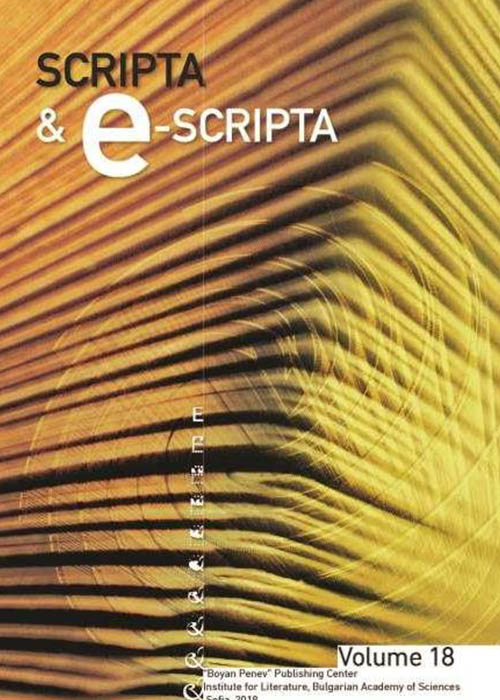Middle Bulgarian Fragment NBKM No 114 in the History of Old Church Slavonic Office Menaion
Среднеболгарский фрагмент НБКМ № 114 в истории переводов славянских служебных миней

- Author(s): Roman Krivko
- Subject(s): Language and Literature Studies // Hymnography // Service menaion // Jerusalem typicon // "Athos" translation //
-
Published by: Institute for Literature BAS

- Print ISSN: 1312-238X
- Summary/Abstract:
In the article the history of the translations of the service minei in the Slavonic tradition by 14 Slavonic manuscripts is examined. Manuscript CMNL № 114 is analyzed, a fragment of a service menaion from the 13th century, Bulgarian by origin, where the oldest translation is presented. The comparisons with another service menaia – from the Monastery of Dechany, No 32 from the 13th – 14th century, show that the oldest translation has been subject of reediting. The presence of another independent translation is established in manuscripts No 114 CMNL, a fragment from the 13th century and No 1/5 OSL (part of the Dobriayan minei) from the 13th century, which does not coincide with the earliest translation, nor with the one that exists in the South-Slavonic menaia from the 14th-15th century by the Jerusalem regulations. Grounded is the view that every hymnographic genre (tropar, stihira, sedalen, condac and icos, canon and each separate tropar of the canon) in the structure of the service should be studied separately in the context of the history of the translations of the service menaia, which will allow us to clarify the amount of the multiple translations. The examined material shows that the advent of the latest “Athos” translation of the service menaion, based on the Jerusalem regulations, is preceded of new translations of separate services (or parts of them), done in the 13th century, without relying on those regulations. Regarding the multiple translations of one and the same text (the Service for the first-martyr Stefan has four translations), it would not be correct to talk about “first” (early) and “second” (late) translation of the service menaia (definitions of V. Jagich), as each service has its own story of the text. Enclosed is a critical edition of parts of the services for the second and third of August – condac and icos of the Service for first-martyr Stefan, as well as fragments of the canon for the Venerable Dalmat, Isakay and Favst, parallel with the Greek text, accompanied with a detail commentary.
Journal: Scripta & e-Scripta vol 3-4, 2006
-
Page Range: 59-94
No. of Pages: 36
Language: Russian - LINK CEEOL: https://www.ceeol.com/search/article-detail?id=83420
-
Roman KrivkoProf., DSc. National Research University, Moscow, Russia
-
SUBJECT: Language and Literature Studies // Hymnography // Service menaion // Jerusalem typicon // "Athos" translation //KEYWORDS:
-